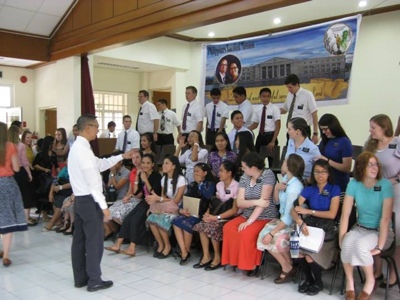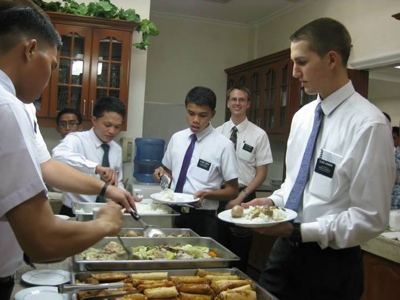Profile
Distance from Bacolod: 31 kilometers
Land Area: 11,250.00 hectares
Classification: 3rd Class
No. of Barangays: 23 Barangays
Population: Roughly around 28,000 (based on the latest survey conducted)
Language: Hiligaynon/Ilonggo/English is spoken and understood
History
Pulupandan derived its name from the vernacular phrase “pulo sang pandan”, meaning “isle of pandan”, due to the wild forest of palms in the town during the early days before it became a bustling seaport.
Formerly a barrio of Valladolid, Pulupandan was organized into an independent pueblo or temporary town together with Sum-ag, Ma-ao and Dancalan, among others, in 1899 under the Republic of Negros when it was created after the successful revolution of Negrenses against Spain.
In 1903, after the short-lived existence of the Negros Cantonal Government, a Re-organization Committee was created in consonance with the re-organization of the government during the American Occupation. Ironically, however, the municipality of Pulupandan was again incorporated as barrio of Valladolid pursuant to the re-organization. Pulupandan remained as such until 1916 when it was again segregated from Valladolid and re-organized into an independent municipality.
Pulupandan was officially created into a town pursuant to the mandate of Governor General Francis Burton Harrison as contained in his Executive Order No. 95 dated December 23, 1916. This creation took effect on January 1, 1917 and was implemented by Resolution No. 36 dated January 12, 1917 of the Provincial Board of Negros Occidental with then Gov. Matias Hilado.
How to Get There
Pulupandan is approximately a 30-minute drive from Bacolod City by private car and a little more than 45 minutes in public utility vehicles and buses via the main highway.
Location
Pulupandan is bounded at the western side of the island of Negros facing Guimaras Strait. Bago River on the north-western portion separates this town from Bago City. The eastern portion is separated from Bago City and the town of Valladolid by the National Highway. The greater portion of this municipality came from the town of Valladolid.
Places of Interest
Green Beach Liberation Stone Marker
It was in the beaches of Pulupandan in the early dawn of March 29, 1945 that the historical event of the landing of American Liberation Forces without any opposition nor bloodshed and who together with the Filipino guerillas drive the enemy forces away from the island of Negros.
This marker standstill at Barangay Zone-1, showcasing the significance of the area’s history and valor, boosting the pride and awareness of the new generation of this rich cultural heritage of the Filipino people.
Jewels Restaurant. The place features the thrill and excitement of fishing aboard a bamboo raft. The place is ideal for family outings and business meetings.
Festival
Salapan Festival – coined from the words salap and pandan. Salap is a native word for “fishnet” and is linked to the traditional guinamos industry. While the word ‘pan’ comes from the word “pandan” which is the basis of the town “Pulo sg Pandan” or isles of pandan. Likewise, another ‘pan’ refers to the port or “pantalan” which is the major factor in the economic growth of the town. The festival showcases: Regatta, Fishing Tournament, Boxing Tournament, Football Tournament (12 under), Live bands, Agro Trade Fair, Bike Race, Laro ng Lahi, Street Dancing Competition and Search for Salapan Festival Queen.




















































